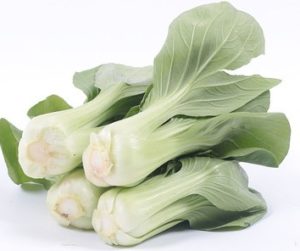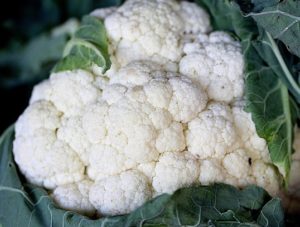 What do Brussels sprouts, kale, and cauliflower have in common? Aside from being some of the trendiest vegetables of the moment, they are all members of the same plant family, Cruciferae. Other vegetables in this family include broccoli, cabbage, bok choy, arugula, kohlrabi, watercress, wasabi (yes, wasabi) and more. This group of vegetables all come from the wild mustard plant. Cruciferous vegetables range in texture, flavor, and pungency. Some are more bitter and some have more peppery notes.
What do Brussels sprouts, kale, and cauliflower have in common? Aside from being some of the trendiest vegetables of the moment, they are all members of the same plant family, Cruciferae. Other vegetables in this family include broccoli, cabbage, bok choy, arugula, kohlrabi, watercress, wasabi (yes, wasabi) and more. This group of vegetables all come from the wild mustard plant. Cruciferous vegetables range in texture, flavor, and pungency. Some are more bitter and some have more peppery notes.
Nutrition of Cruciferous Vegetables
We’ve all heard how important it is to eat vegetables, especially green vegetables, but why is this?
Cruciferous vegetables, like all vegetables, have two qualities to help maintain a healthy weight and reduce the risk of chronic diseases. These qualities are:
- Low in calories
- High in fiber
Green cruciferous vegetables are also high in several vitamins and minerals:
Additional Health Benefits of Cruciferous Vegetables
 They contain a unique group of plant chemicals (phytochemicals) called isothiocyanates. These chemicals are a way the plants defend themselves. Think of the biting sensation of mustard and wasabi. While in humans, this bitter phytochemical has many health benefits. For example, human clinical studies have shown isothiocyanates to have powerful antioxidant properties. Additionally, they have the ability to clear pollutants and carcinogens from the body.
They contain a unique group of plant chemicals (phytochemicals) called isothiocyanates. These chemicals are a way the plants defend themselves. Think of the biting sensation of mustard and wasabi. While in humans, this bitter phytochemical has many health benefits. For example, human clinical studies have shown isothiocyanates to have powerful antioxidant properties. Additionally, they have the ability to clear pollutants and carcinogens from the body.
Most importantly these antioxidant and detoxifying properties translate to:
- Cancer prevention
- Improved heart health
- Enhanced immunity
Ways to Enjoy Cruciferous Vegetables
Now let’s get to the important part, eating. Similar to sugar or cream being combined with coffee, the bitterness of these vegetables can be tamed. Try combining them with fruit or a slightly sweet sauce/vinaigrette. Cooking can also caramelize their natural sugars. Just like how Bubba from Forrest Gump listed the different ways shrimp can be prepared, there are countless ways to prepare cruciferous vegetables. Explore your grocery store and experiment with different culinary techniques and preparations.
Try them:
- Raw
- Shredded
- Pureed
- Pickled
- Stir-fried
- Roasted

- Salads
- Smoothies
- Soups
- Sandwiches
- Pastas
- On pizza
Comment below with some of your favorite recipes or ways to prepare cruciferous vegetables.


If you like crunchy and salty snacks you might love these crispy kale chips. My children were eating them so quickly I had to teach them to make their own. They have gotten very creative by adding a little hot sauce, seasoned salt or even honey and mustard before baking. Tasty! https://extension.colostate.edu/docs/pubs/fammatrs/fm1508e.pdf
I love a bowl of Kale Potato soup with Red Chili on a cold or gloomy day.https://extension.colostate.edu/topic-areas/family-home-consumer/family-matters-newsletter/family-matters-march-2017/
One of my favorite recipes for broccoli and cauliflower is the Roasted Buddha Bowl from the Oh She Glows blog. https://ohsheglows.com/2013/03/05/roasted-buddha-bowl/
Have always enjoyed stir-fried and roasted vegetables.